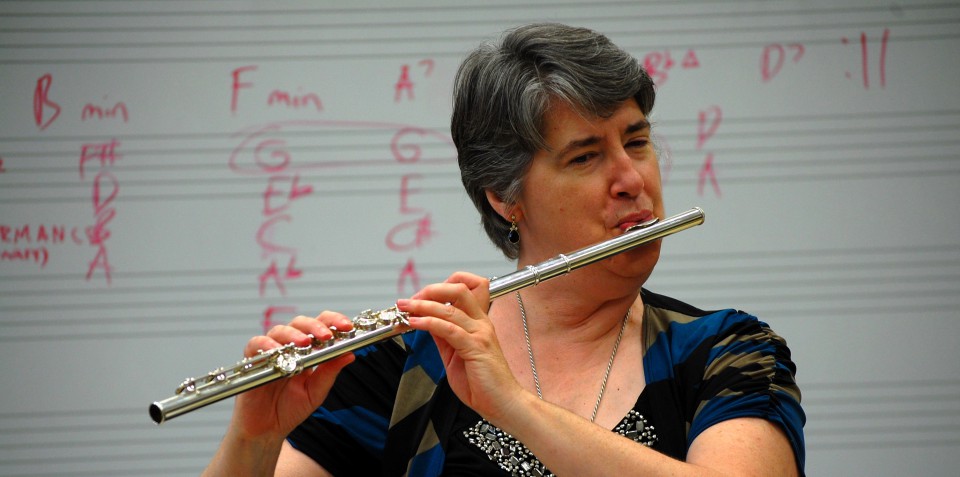 What is the home scale of the flute? Has this changed as the flute evolved into its modern form? How does this relate to traditional band keys? What effect does learning band keys first on flute have on understanding the sequential nature of flute fingerings?
What is the home scale of the flute? Has this changed as the flute evolved into its modern form? How does this relate to traditional band keys? What effect does learning band keys first on flute have on understanding the sequential nature of flute fingerings?
Historically, the flute has been built with the D major scale being its home key, i.e. starting with all keys closed (minus the foot joint) and lifting one finger at a time in sequential order. With the advent of the modern keyed flute in the mid-1800’s and the addition of the foot joint, you could make a case for the C major scale becoming the home key of the flute today because that is the scale we play by lifting up each finger in direct order from bottom to top on our modern, Boehm system flutes.
I have to say I’m not a big fan of teaching Bb before B natural, despite band pedagogy being so heavily weighted toward flat keys to accommodate the transposing instruments. The main reason for this is I think that teaching Bb first creates an obstacle for kids grasping the idea that the nature of fingering on the flute is sequential, fingers lifting or closing keys in order to go up and down the instrument. And this is despite the fact that I advocate teaching the 1 and 1 Bb before teaching the thumb Bb, as I’ve outlined before. You could teach thumb Bb to maintain the sequential nature of the scale, but then you can cause other problems down the road when it comes to teaching any scale with adjacent Bb and B, regardless of enharmonic spelling (especially the keys of Gb/F# major, B major and chromatic scales). You don’t want kids getting into the habit of sliding their thumb between the B and Bb. That is a really damaging habit to good technique in the long run.
Despite the fact that the major band methods start kids with middle F, Eb and D, I vehemently disagree with this. Good flute tone is based on building from the low octave and up. The middle octave is an overtone, a harmonic of the first octave. You really can’t equate it to what works for brass instruments where you need to start in the middle of the series and work outward. The other problem is that Eb and D are ridiculously hard for beginners. They are some of the longest notes, in terms of length of tube to activate, on the flute.
A better formula for building a successful flute section is to teach B, A, G in the low register. Then add C, being sure to work on balancing the instrument. Then add low F and E. After that, teach E, F and G in the middle octave, relating them to the low E, F and G using octaves. Finally fill in the D, Eb and Bb. By the time the kids get to the D and Eb in the middle register, they have a good grasp of how to move enough air to really activate the tube and playing these notes isn’t nearly as difficult as trying to start from there.
If you find these entries useful, please subscribe, share with your colleagues and come back regularly. Feel free to comment. If you have a topic you would like to see explored more fully, you can contact me via IM/Messenger on Facebook or email me at dr_cate@sbcglobal.net. For information about clinics, workshops and performances, click here.

Pingback: Favorite blog posts, November 2016 | Bret Pimentel, woodwinds
Can you give notation for which pitches these are? I’m not sure which is low, middle and upper register on the flute.
LikeLike
The lowest register on the standard concert flute starts on middle C or B(B3 or C4 to B4 ) on the piano. The middle register is C5-B5 and the third octave is C6-C7, plus a couple more notes (up to E7 or F7). Piccolo starts at D5 (most do not have C and C#) and goes to C8.
LikeLike